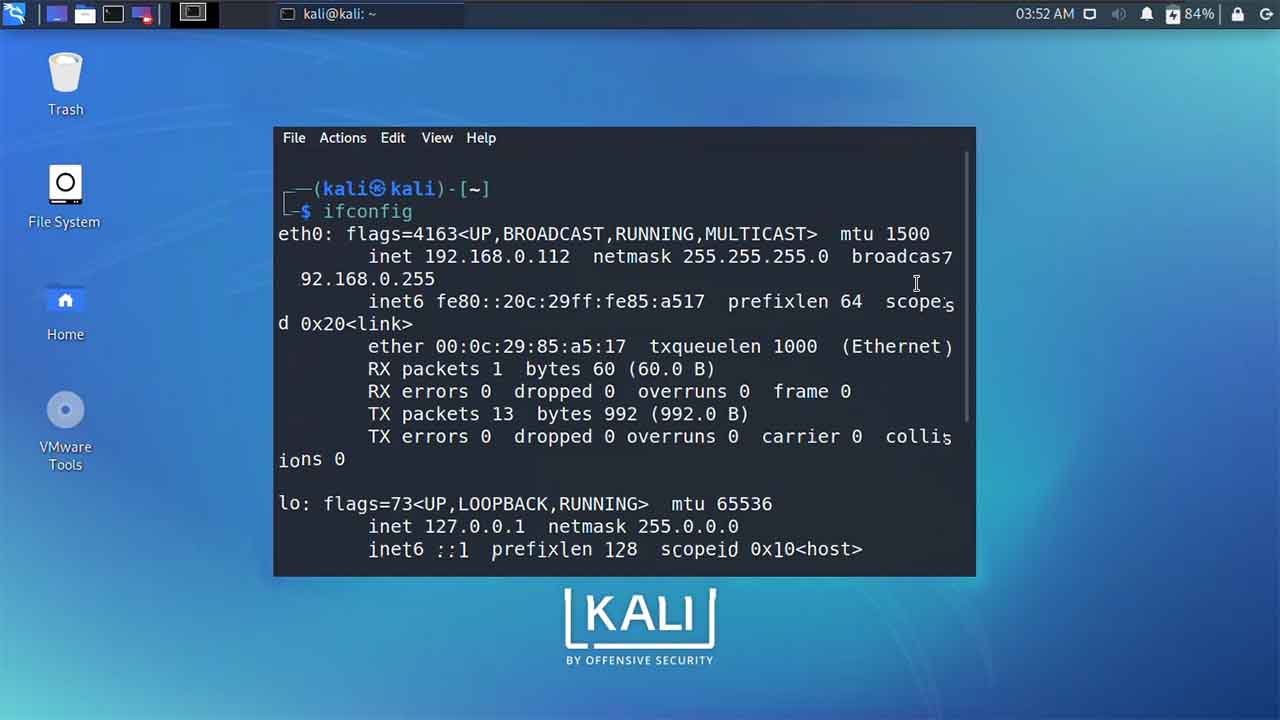To find the netmask of an IP address in Linux, puoi usare il ifconfig comando. This command displays the network configuration information for all of the network interfaces on your system. To find the netmask of a specific interface, puoi usare il -a opzione, which tells ifconfig to display all of the available information for that interface.
Per esempio, if you want to find the netmask for the eth0 interface, you can use the following command:
ifconfig eth0 -a
This will display the netmask for the eth0 interface, along with other information about the interface such as the IP address, broadcast address, and MAC address.
In alternativa, puoi usare il ip command to display the netmask for a specific interface. Il ip command is a more modern and versatile command for managing network interfaces in Linux. To find the netmask for the eth0 interface using the ip comando, you can use the following command:
ip addr show eth0
This will display the netmask for the eth0 interface, along with other information about the interface such as the IP address and MAC address.
How do I find the netmask of an IP address in Linux?
- To find the netmask of an IP address in Linux, puoi usare il
ifconfigoipcomando. Ilifconfigcommand displays network configuration information for all of the network interfaces on your system, and you can use the-aoption to display detailed information for a specific interface. Ilipcommand is a more modern and versatile tool for managing network interfaces, and you can use it to display the netmask for a specific interface by using theip addr showcomando.
What is a netmask and why is it important?
- A netmask is a 32-bit number that is used to identify the network and host portions of an IP address. The netmask is typically expressed in dotted decimal notation, with each octet representing a group of 8 bits in the netmask. The netmask is important because it determines which portion of the IP address identifies the network, and which portion identifies the host. This information is used by routers and other network devices to determine how to route traffic to and from the IP address.
How do I set the netmask for a network interface in Linux?
- To set the netmask for a network interface in Linux, puoi usare il
ifconfigoipcomando. To set the netmask usingifconfig, you can use the following syntax:
ifconfig interface netmask netmask_value
Per esempio, to set the netmask for the eth0 interface to 255.255.255.0, you can use the following command:
ifconfig eth0 netmask 255.255.255.0
To set the netmask using the ip comando, you can use the following syntax:
ip addr aggiungere netmask netmask_value dev interface
Per esempio, to set the netmask for the eth0 interface to 255.255.255.0, you can use the following command:
ip addr aggiungere netmask 255.255.255.0 dev eth0
Can I use a netmask other than the standard ones (255.0.0.0, 255.255.0.0, 255.255.255.0)?
- sì, you can use a netmask other than the standard ones if you have a specific reason to do so. Tuttavia, nella maggior parte dei casi, it is recommended to use the standard netmasks (255.0.0.0, 255.255.0.0, 255.255.255.0) because they are the most widely used and supported. Using a non-standard netmask can cause compatibility issues and make it difficult for other devices on the network to communicate with your network interface. If you have a specific requirement to use a non-standard netmask, it is recommended to consult with a network administrator or expert before implementing it.
What is the difference between ifconfig e ip?
The main difference between ifconfig e ip is that ifconfig is an older command with a more limited set of features, while ip is a more modern and versatile tool for managing network interfaces in Linux. ifconfig is still commonly used, ma ip is generally preferred for its easier syntax and advanced features.




